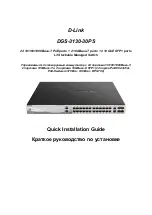
435
14.5 RIPng
14.5.1 Introduction to RIPng
RIPng is first introduced in ARPANET, this is a protocol dedicated to small, simple
networks. RIPng is a distance vector routing protocol based on the Bellman-Ford
algorithm. Network devices running vector routing protocol send 2 kind of information to
the neighboring devices regularly:
• Number of hops to reach the destination network, or metrics to use or number of
networks to pass.
• What is the next hop, or the director (vector) to use to reach the destination
network.
Distance vector layer3 switches send all their route selecting tables to the neighbor
layer3 switches at regular interval. A layer3 switch will build their own route selecting
information table based on the information received from the neighbor layer3 switches.
Then, it will send this information to its own neighbor layer3 switches. As a result, the
route selection table is built on second hand information, route beyond 15 hops will be
deemed as unreachable.
RIPng is an optional routing protocol based on UDP. Hosts using RIPng send and
receive packets on UDP port 521. All layer3 switches running RIPng send their route
table to all neighbor layer3 switches every 30 seconds for update.If no information from
the partner is received in 180 seconds, then the device is deemed to have failed and the
network connected to that device is considered to be unreachable. However, the route of
that layer3 switch will be kept in the route table for another 120 seconds before deletion.
As layer3 switches running RIPng build route table with second hand information,
infinite count may occur. For a network running RIPng routing protocol, when a RIPng
route becomes unreachable, the neighboring RIPng layer3 switch will not send route
update packets at once, instead, it waits until the update interval timeout (every 30
seconds) and sends the update packets containing that route. If before it receives the
updated packet, its neighbors send packets containing the information about the failed
neighbor, “infinite count” will be resulted. In other words, the route of unreachable layer3
switch will be selected with the metrics increasing progressively. This greatly affects the
route selection and route aggregation time.
To avoid “infinite count”, RIPng provides mechanism such as “split horizon” and
“triggered update” to solve route loop. “Split horizon” is done by avoiding sending to a
















































